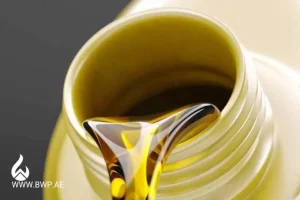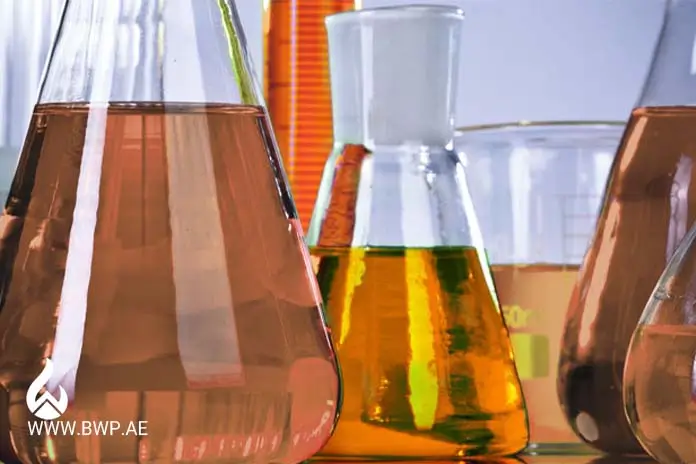In the world of lubricants, the foundation of high-performance products lies in the oils used to ensure smooth operation and long-lasting reliability of engines and machinery. These oils, derived from crude oil or synthetic processes, are carefully classified based on their chemical composition and refining techniques. Understanding the science behind these oils is essential for selecting the right products and optimizing performance in various industrial applications.
Base Oil Group 3 Products BWP : Base oil 6cst , Base oil 4cst
This article explores the complexities of oil classification, focusing on the different groups that define their quality and suitability. From Group I to Group V, each classification is determined by factors like refining methods, viscosity, and oxidative stability. We will also examine the API classification system and discuss emerging unofficial categories, such as Group II+ and Group III+, that are shaping the future of lubricant performance. By the end, you’ll gain insight into how these oils are produced and classified to meet diverse industry needs.
Classification of Base Oils
In the lubricant industry, base oil are classified into different groups based on their chemical composition, refining processes, and overall performance characteristics. These classifications are essential in determining the suitability of oils for various applications, from automotive engines to industrial machinery. The key groups—ranging from Base Oil Group I to Base Oil Group V—are differentiated by the degree of refinement and the properties they exhibit, such as viscosity index, oxidation stability, and volatility. Understanding these distinctions is vital for selecting the right base oil for specific needs.
Group I: Solvent-Refined Oils
Group I base oils are the most basic form of mineral oils, produced through solvent refining. This process involves distilling crude oil and then treating it with a solvent to remove impurities such as sulfur, aromatics, and heavy metals. The result is an oil with relatively lower purity and a lower viscosity index (VI), meaning it performs less efficiently in extreme temperatures. These oils are typically used in applications where cost is the primary consideration, such as in certain engine oils and industrial lubricants. However, due to their higher levels of impurities and lower oxidation stability, Group I oils are increasingly being phased out in favour of higher-performing oils.
Group II: Hydroprocessed Oils
Group II oils are produced through a more advanced refining method called hydroprocessing or hydrocracking. This process uses hydrogen to remove impurities from the base oil, resulting in a cleaner, more stable product with a higher viscosity index. The hydroprocessing method also significantly reduces the levels of sulfur, aromatics, and other contaminants. As a result, Group II oils offer better oxidation stability and perform well in a broader range of temperatures compared to Group I oils.
These oils are widely used in automotive and industrial applications, particularly in engine oils, where higher oxidation stability and lower volatility are crucial for performance and longer oil change intervals. Group II oils are often seen as a middle ground between traditional mineral oils and more advanced synthetic oils, offering a balance between cost and performance.
Group III: Severely Hydroprocessed Oils
Group III oils undergo a more rigorous hydroprocessing technique than Group II oils, resulting in even higher purity and stability. This process significantly improves the viscosity index and thermal stability of the oil, making it suitable for use in high-performance lubricants. Group III base oils are often marketed as “synthetic” because of their enhanced properties, although they are technically still derived from crude oil.
These oils exhibit excellent low-temperature flow properties and are highly resistant to oxidation, making them ideal for use in demanding automotive applications, such as premium motor oils. They also provide superior fuel efficiency and engine protection, contributing to longer oil change intervals and reduced wear. While Group III oils offer significant performance advantages over Group II, they are still more affordable than fully synthetic oils, making them a popular choice for many manufacturers.
Group IV: Synthetic Oils (PAO)
Group IV oils, primarily composed of Polyalphaolefins (PAO), are fully synthetic oils that are chemically engineered to provide superior performance. PAOs are made through a polymerisation process, where smaller molecules are linked together to create larger, more stable molecules. This process allows for the production of oils with exceptional low-temperature flow properties, high oxidative stability, and very low volatility.
The performance of Group IV oils far surpasses that of mineral oils, making them ideal for high-performance applications, such as racing engines, aerospace, and extreme temperature environments. PAO-based oils maintain their properties under harsh conditions, ensuring long-lasting lubrication and protection. However, the cost of production for PAOs is higher than that of mineral oils, making Group IV oils more expensive. Despite this, their exceptional performance and longer service life make them worth the investment for high-end applications.
Group V: Other Synthetic Oils
Group V encompasses all other synthetic oils that don’t fit into the previous categories, such as esters, polyalkylene glycols (PAGs), and phosphate esters. These oils are often used in niche applications that require specific properties, such as biodegradability, high lubricity, or extreme pressure resistance.
For example, ester-based oils are commonly used in high-performance aviation lubricants and high-load industrial applications, where their excellent lubrication properties and resistance to wear are crucial. These oils also have better biodegradability compared to other base oils, making them ideal for environmentally sensitive applications, such as marine lubricants.
PAG oils, another type of Group V base oil, offer excellent high-temperature stability and low-temperature performance, making them suitable for use in refrigeration systems and automotive air conditioning units.
Comparing the Base Oil Groups
The differences between these base oil groups are primarily determined by their refining methods, chemical composition, and the resulting performance characteristics. Group I oils, while affordable, have the lowest performance and are being replaced by higher-quality oils. Group II oils strike a balance between cost and performance, offering better stability and higher oxidation resistance. Group III oils, with their synthetic-like properties, provide superior performance, especially in high-performance automotive and industrial applications. Group IV oils, composed of PAOs, are the most advanced and offer exceptional stability, low-temperature performance, and high resistance to oxidation. Finally, Group V oils cater to specific applications, such as extreme pressure or environmentally sensitive conditions, and offer unique properties not found in the other groups.
Production of Mineral Oils
Mineral oils, commonly used as base oils in lubricants, are derived from crude oil through a series of refining processes that transform raw hydrocarbons into high-quality, functional oils. The production of mineral oils is a complex and multi-step process that ensures the final product meets specific performance criteria, such as stability, viscosity, and low volatility.
Crude Oil Distillation
The first step in the production of mineral oils begins with the distillation of crude oil. Crude oil is a mixture of hydrocarbons, and distillation is used to separate these compounds based on their boiling points. The distillation process produces various fractions, including lighter products like gasoline and heavier products such as bitumen and fuel oils. The middle distillates, which include kerosene and gas oils, are the starting point for mineral oil production.
Solvent Refining
After distillation, the next step is solvent refining, which removes impurities such as sulfur, nitrogen, and aromatic compounds from the base oil. This is done by using a solvent, typically furfural or phenol, which selectively dissolves the unwanted components. The result is a cleaner, more stable base oil with improved performance characteristics. Solvent refining also helps improve the oil’s viscosity index and reduce the presence of impurities that could affect oxidation stability.
Hydroprocessing
To further enhance the quality of the base oil, hydroprocessing is often employed. This process involves treating the oil with hydrogen at high temperatures and pressures to break down heavier molecules and remove any remaining sulfur and aromatic compounds. Hydroprocessing produces oils with better oxidative stability, higher viscosity index, and improved overall performance. This step is especially common in the production of Group II and Group III base oils, which are known for their superior properties.
Through these refining methods, crude oil is transformed into high-quality mineral oils suitable for a wide range of industrial and automotive applications.
Unofficial Classifications of Base Oils
While the API classification system is the standard for categorizing base oils, there are also several unofficial classifications that have emerged within the industry. These classifications, such as Group II+, Group III+, and Group VI, are used to describe oils that exhibit characteristics beyond the conventional API groupings. Although these terms are not officially recognized by the American Petroleum Institute (API), they provide valuable insights into the performance and quality of base oils that fall between established categories.
Group II+ (Group 2 Plus)
The term “Group II+” refers to a category of oils that are produced using hydroprocessing, similar to Group II base oils, but with a higher degree of refinement. These oils have a higher viscosity index and better oxidative stability than standard Group II oils, making them more suitable for high-performance applications. Group II+ oils often offer superior thermal stability and a more consistent performance across a wider range of temperatures compared to regular Group II oils. They are sometimes seen as a transitional product between Group II and Group III base oils, offering a balance of cost and performance.
Group II+ oils are increasingly used in the automotive and industrial sectors, particularly in engine oils, where the demand for better performance is growing. Although Group II+ oils are not officially classified by the API, their improved characteristics make them an attractive choice for manufacturers seeking higher-quality base oils without the higher cost associated with fully synthetic options.

Group III+ (Group 3 Plus)
Group III+ oils represent a further enhancement of Group III base oils, which are produced through severe hydroprocessing techniques. These oils typically exhibit a higher viscosity index, lower volatility, and better oxidative stability than standard Group III oils. Group III+ oils often have properties that approach those of Group IV oils (synthetic PAOs), but without the higher production costs.
The term “Group III+” is commonly used in the industry to describe oils that provide enhanced performance, particularly in terms of high-temperature stability and long-term engine protection. These oils are suitable for high-performance and premium applications, such as in modern automotive engines and heavy-duty machinery, where extended oil drain intervals and superior protection are critical. While they are not officially recognized by the API, Group III+ oils are increasingly popular due to their excellent balance of performance and cost-effectiveness.
Group VI: Full Synthetic Oils
Group VI is an unofficial classification used to describe oils that are fully synthetic and have properties that exceed those of Group IV (PAO-based oils). These oils are often created using advanced synthetic technologies, such as ester-based oils or polyalkylene glycols (PAGs), which provide unique advantages such as exceptional lubrication, high biodegradability, and resistance to extreme temperatures and pressures.
Group VI oils are typically used in highly specialized applications, including aerospace, aviation, and certain industrial processes, where extreme performance is required. These oils offer superior high-temperature stability, low friction properties, and long-lasting protection, making them ideal for environments where conventional oils would break down or fail.
Though the term “Group VI” is not officially recognized by the API, it is used to describe the highest-performing synthetic oils available, which offer unique properties not found in other groups. The use of Group VI oils continues to grow in niche applications, particularly where performance demands are at their highest.
Conclusion
The classification of base oils is a critical aspect of the lubricant industry, helping manufacturers and consumers make informed decisions about the most suitable oils for specific applications. From the traditional API groups, ranging from Group I to Group V, to the emerging unofficial classifications like Group II+, Group III+, and Group VI, each classification reflects the base oil’s refining process, chemical composition, and performance capabilities.
Group I oils, with their lower purity and performance, are gradually being replaced by higher-quality oils like Group II and Group III, which offer better stability, higher viscosity index, and superior performance in extreme conditions. Meanwhile, Group IV and Group V oils, composed of synthetic compounds, provide exceptional performance for high-demand applications.
Unofficial classifications, such as Group II+ and Group III+, offer an important middle ground, blending cost-effectiveness with advanced performance characteristics. These oils meet the increasing demands of modern industries while offering an affordable alternative to fully synthetic options.
As the lubricant industry evolves, the classification of base oils continues to be essential in providing tailored solutions for various applications. Understanding these classifications ensures that the right base oil is chosen, leading to improved performance, longer service life, and cost-effective solutions for consumers and manufacturers alike.
For more information, read the article linked below:
Oil storage for rent




No comment